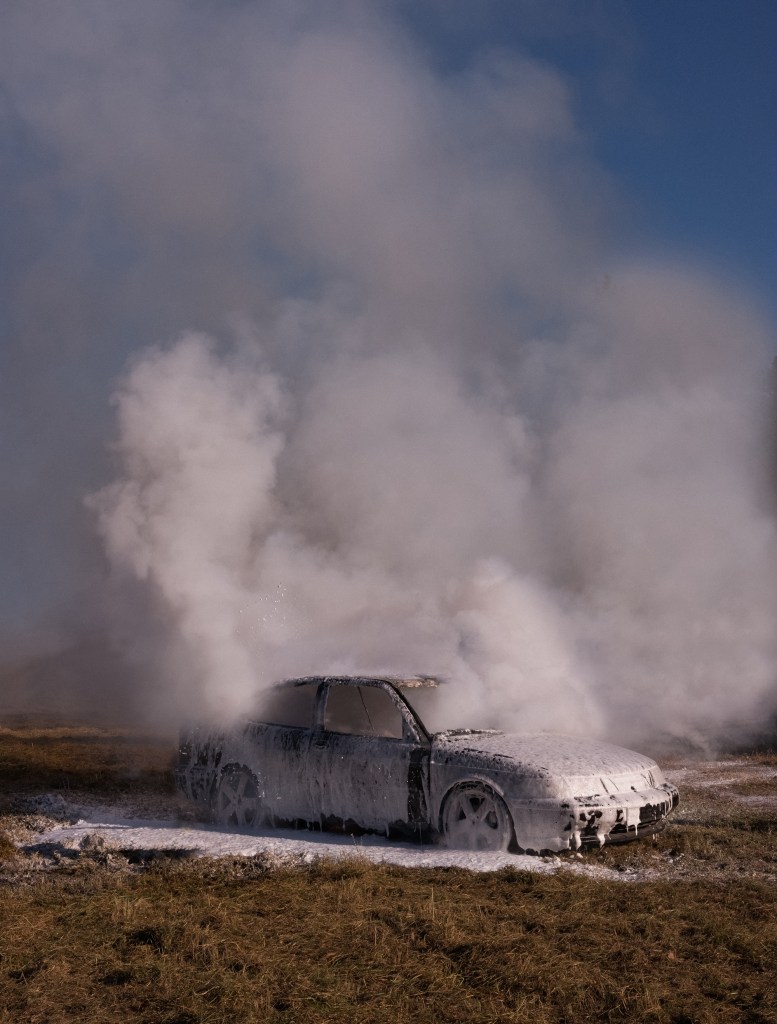Elite runner Kellyn Taylor has spent the last several months at home in Flagstaff, Arizona, training for the New York City Marathon: long runs, hills, timed trials, all in the name of honing her pace to perfection.
And, in recent months, Taylor, 31, has also been dragging a 185-pound dummy around, flinging a sledgehammer, learning how to perform CPR, and about the nuances of tactical hose management. Taylor, who was an alternate at the 2016 Olympic Games in Rio, is also an aspiring firefighter.
Videos by VICE
“I wanted a job that wasn’t always the same,” Taylor said. “Something that was dynamic, constantly changing. You go into a fire station and you never know what is going to happen. You could have a house fire, a medical call, or anything else. That’s interesting to me. It keeps you on your toes to be constantly physically and mentally challenged like that.”
There are roughly 327,000 firefighters in the U.S., according to the U.S. Bureau of Labor Statistics, and industry estimates say that less than five percent of them are women, a number that has remained stubbornly low for decades. What’s more, Taylor, who is also a mother, may be the only Olympian in that pool, training for both professions simultaneously. (The rare pro-athlete-turned-firefighter usually has more of a powerlifting profile, such as Erron Kinney, a former tight end for the Tennessee Titans, who also works as a firefighter and this year was named a fire chief in Sherborn, Mass.)
“The idea to do firefighting popped in my head and I couldn’t get it out,” she said.
Taylor’s love of running came first, though. A native of Wisconsin, she said that she started competing in sixth grade and was encouraged as she kept winning local races. She also played soccer and competed in gymnastics, but track and field landed her a college scholarship at Wichita State. In 2009, she finished third in the mile at the NCAA indoor championships and was an All-American. She graduated that same year, with a major in exercise science. “Definitely not fire-related,” she said.
A year later, she gave birth to her daughter and in 2011 moved to Flagstaff to train with Northern Arizona Elite, a professional running team. At the 2012 U.S. Olympic Track and Field Trials, she finished tenth in the 10,000 meters. She was fourth at the U.S. 10 Mile Championships the following year.
It was about four years ago, Taylor said, that the idea to train to be firefighter entered her head. She started researching her options and began taking fire training courses at a nearby community college. “I’ve been slowly chipping away at it ever since,” she said, balancing the coursework with her punishing 100-mile-a-week elite running schedule.
Today, Taylor is a certified EMT and at the end of last year she completed her Arizona State Fire Training Committee Fire I and II coursework, two required, rigorous courses that put would-be firefighters through a range of drills and courses, ranging from emergency response tactics to burn exercises.
“It’s definitely very different than running,” Taylor said. “It’s very physically taxing. If I was a 300-pound guy, I would have the mass to help. I just don’t have that. I’m physically fit, but I don’t have weight on my side.”
In order to succeed, she practiced carrying a dummy she and her husband made. She has a tire and a Keiser sled—a “simulated forcible entry-chopping device,” according to its manufacturer—which she uses to practice wielding a sledgehammer. She added weight during her runs, 30 pounds or so, to replicate the feeling of charging into a fire while wearing gear. When she was used in a demonstration during class of how to rescue a colleague with a backpack, she Instagrammed the occasion, along with her experience learning at a live fire and charging at the woods in a yellow construction hat. On one single day, she ran 10 miles, then threw on her fire suit and headed to training, where she helped tear apart some cars. “You’re learning everything that you’re going to be doing as a firefighter.”
To most runners, lung capacity is a precious resource, so taking on an additional job that revolves around charging into smoke- and fire-filled situations might give some pause. But thanks to advances in fire technology such as breathing apparatuses, Taylor said she isn’t afraid of exposure to carbon monoxide or other elements that could hinder her breathing. “If this was 30 or 40 years ago, I think that would be more of an issue,” she said.
Meanwhile, on the running trail like many runners, she began to transition into longer distances. Last year, she finished sixth at the U.S. Olympic Trials Marathon and fourth in the 10,000 meters, earning a ticket to Rio that summer.
Over the past year, Taylor said her training has been far more focused on running than firefighting, and in September she “failed miserably” at her firefighting physical ability test during a hiring event for Flagstaff’s fire department. “I missed by 12 seconds,” she said. “It was a bummer, but I think it lit a fire underneath me this time.”
Taylor knew juggling both would be difficult, but she likes staying busy. Far from discouraged, she plans to incorporate more fire-training moves into her fitness routine after New York, and apply for the fire department again.
“I enjoy it,” she said. “Here I am, showing up to a class, 100 pounds, up against these guys that are 200 pounds or more of all muscle. It looks kind of silly and you could tell they thought, What the hell is she doing here? But I like proving myself. And I think I did.”
More
From VICE
-

Photo by Gary Hershorn/Getty Images -

Lauren Levis, who died after taking iboga at the Soul Centro retreat in 2024. (Photo courtesy of the Levis family) -

Ada Zielińska -

Photo by Gorodenkoff
